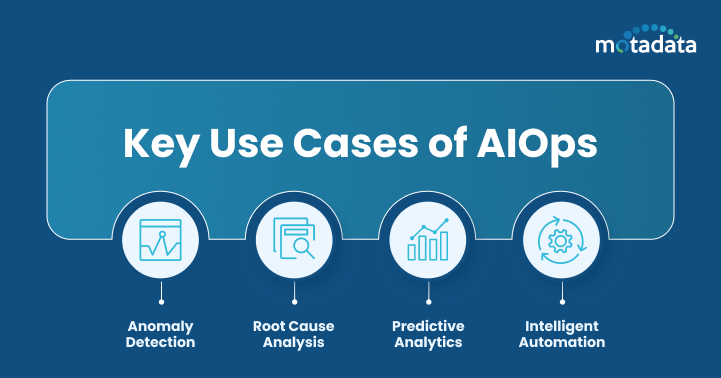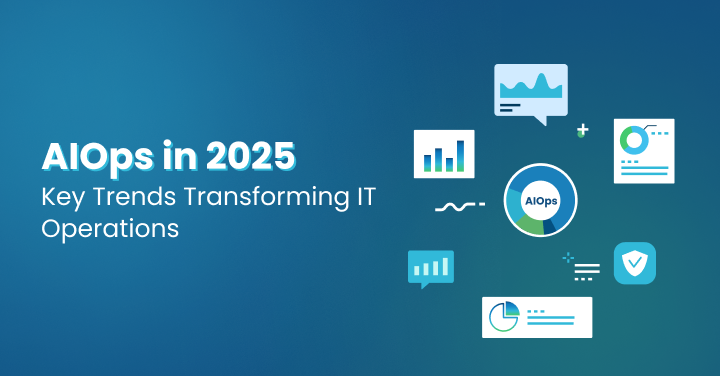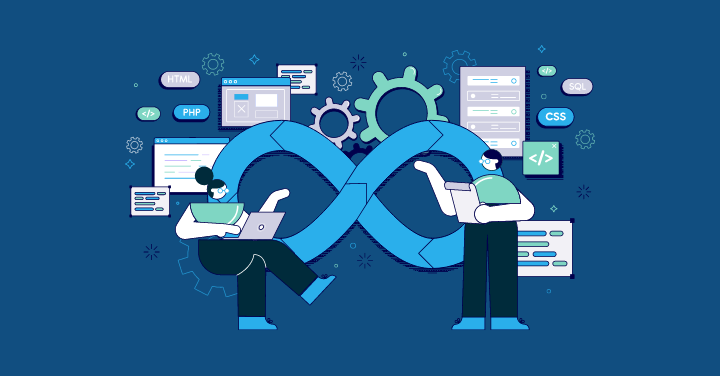Introduction
Having on hand actionable insights is crucial in today’s fast-changing world of technology; with digital changes and more businesses using cloud computing, companies must make sure their IT operations run smoothly.
As IT systems grow more complex, old ways of managing them can’t keep up. This is where a smart AIOps solution can really make a difference.
Understanding the Evolution of IT Operations
IT operations have changed a lot over the years. At first, IT departments used manual processes and separate tools to handle their IT infrastructure.
But, as the number of devices, applications, and data grew, these old methods could not keep up.
Big data analytics was a game changer. It helped organizations understand and get insights from large amounts of IT data.
Even big data analytics still requires a lot of human intervention to make sense of the data and take action.
The need for more innovative and automated solutions became apparent as IT environments became increasingly complex. This need led to the development of AIOps.
The Rise of AIOps
AIOps is the new way of running IT operations whether you are working on a hybrid cloud or an on-premises setting.
It uses artificial intelligence and machine learning to change how companies manage their IT systems, keeping a regular check on performance monitoring.
AIOps looks at the large amounts of data produced by these systems. By using AI and ML, AIOps can automate and improve many IT operations tasks.
AIOps helps IT teams analyze data, find problems (anomaly detection), and respond to incidents. It also helps with predicting maintenance.
This allows organizations to move from fixing issues as they happen to a more intelligent and more efficient way of handling IT operations.
For many CIOs, teaming up with an AI Development company has become a natural step, bringing in the kind of smart support that helps AIOps fit seamlessly into their existing workflows. It’s all about making things simpler, faster, and more adaptive.
Key Use Cases of AIOps
AIOps has many uses that can help organizations in different industries. Here are some critical areas where AIOps is making a big difference:
Some examples are anomaly detection, root cause analysis, and predictive analytics. By automating these critical processes, AIOps allows IT teams to spend more time on valuable tasks like innovation and planning.
Anomaly Detection:
Detecting problems in IT operations is very important when using AIOps. AIOps platforms use advanced analytics and machine learning to look through large amounts of data from many sources.
They help find irregularities in performance metrics. This way, operations teams can spot potential issues before they become more significant problems.
It improves the system’s reliability and the customer experience. Anomaly detection is key to AIOps solutions. It helps with quick incident response and better IT service delivery.
Root Cause Analysis:
Root cause analysis in AIOps uses tools like machine learning and artificial intelligence. It helps find the main reasons for IT problems.
AIOps looks at data from many places, including event data, records, and performance metrics.
This allows IT teams to identify the cause of an issue quickly before it can ill impact the volumes of data at hand.
This proactive method helps solve potential problems before they get worse and allows the team of analyze both the historical data and the contemporary data in real time.
It leads to smoother IT operations, a better customer experience, and eliminating operational issues.
AIOps tools make root cause analysis easier and improve problem resolution through better incident management solutions.
Predictive Analytics:
Predictive analytics in AIOps uses machine learning to predict possible problems in IT systems and hasten the speed of incident resolution.
It does this by looking at past and current data so that it becomes easier to find the root cause of an issue.
Such intelligent monitoring demonstrates the growing importance of AI development in creating proactive and resilient IT operations.
By spotting patterns and trends, predictive analytics helps teams solve problems early.
This can lead to quicker response times and better performance management. With this method, IT operations teams can tackle potential issues before they worsen.
This ensures that systems run well and that customers have a better experience. AI-driven predictive analysis turns large sets of operational data into useful information.
This helps IT professionals make strategic choices to avoid performance issues.
Automation:
In AIOps, automation is essential for improving IT operations. Using artificial intelligence and machine learning, automation helps IT operations teams handle large amounts of data.
It also helps them fix potential issues before they become problems. With intelligent automation, routine IT operations are done automatically.
This gives IT professionals more time to work on meaningful projects and improve systems’ performance.
This proactive automating method, supported by AI development services, helps CIOs keep things running smoothly and quickly adjust to the changing IT environment.
AIOps and the CIO’s Role
As more organizations adopt digital technology, CIOs become crucial in pushing for new ideas and using technology to meet business goals.
AIOps has become essential for CIOs who want to improve IT operations and offer better business services.
When CIOs use an AIOps platform, they give their teams powerful tools and information. This helps them manage IT infrastructure more effectively, lower downtime, and boost IT service quality.
By using AIOps, CIOs can improve efficiency and save important resources. This allows them to spend more time planning strategies and new ideas that help the business grow.
Challenges and Considerations for Adopting AIOps
While AIOps has many benefits, there are some challenges and things to consider when adopting it.
First, data quality is paramount for AIOps to work well. Organizations must ensure their IT data is accurate, consistent, and accessible for the AIOps platform.
Next, adding AIOps to an existing IT environment can be tricky. This requires careful planning and execution. Choosing an AIOps platform that fits current IT systems and processes is essential.
Other challenges include managing the changes in the IT team, dealing with security and privacy concerns about data access, and the need for ongoing training to use the AIOps features fully.
By recognizing and handling these challenges ahead of time, organizations can improve their chances of successfully adopting AIOps and enjoy its many benefits.
Conclusion
In conclusion, AIOPs are changing IT operations, and CIOs are essential to using their advantages for business success and better performance analysis.
AIOps has advanced tools like anomaly detection, root cause analysis, predictive analytics, and automation which helps in analysising the large volumes of data.
These tools help make IT processes smoother and more efficient. But, using AIOps also has some challenges that need careful attention.
By adopting this new technology, CIOs can improve IT operations and make better decisions.
The benefits of AIOps play a pivotal role in enhancing the business operations and stay ahead in the digital world.
Stay informed, stay proactive, and welcome the future of IT operations with AIOps.
FAQs:
AIOps uses artificial intelligence and machine learning to help IT operations management teams run smoothly. It looks at data from different places. This helps automate tasks and spot patterns, and provide helpful insights to improve IT operations.
AIOps makes operations more efficient. It helps with managing incidents and fixes problems before they happen. By lowering the mean time to repair and offering insights from data, AIOps change how we resolve issues and manage performance in IT operations.
CIOs can use AIOps tools to improve IT service management. These tools help them make wise choices based on data. AIOps enhances customer experience and helps with digital transformation. This way, CIOs can bring real value to the business.








